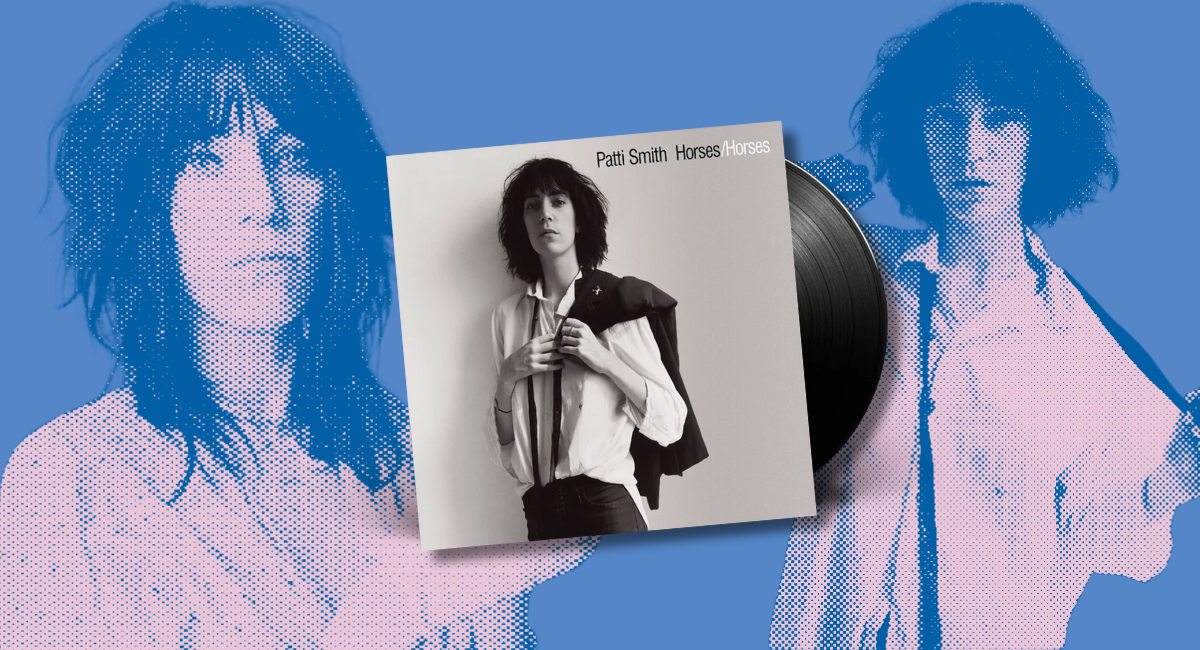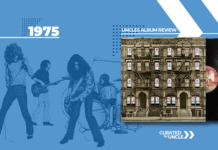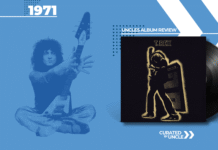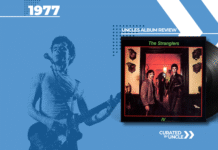Horses (1975): The Album That Kicked Open the Church Doors of Punk and Shouted Obscenities
You don’t listen to Horses. You’re assaulted by it. Patti Smith’s 1975 debut album isn’t an easy ride – despite the equine metaphor – but it’s an absolutely essential one. Half punk, half poetry, half existential screaming fit (yes, that’s three halves, just go with it), Horses doesn’t care if you “get it.” And that’s exactly why it still matters.
Produced by John Cale of Velvet Underground misery fame, Horses is the sound of someone with something to say and a boot ready to wedge itself into the music industry’s sensitive areas. It wasn’t just an album – it was a middle finger with eyeliner.
Table of Contents
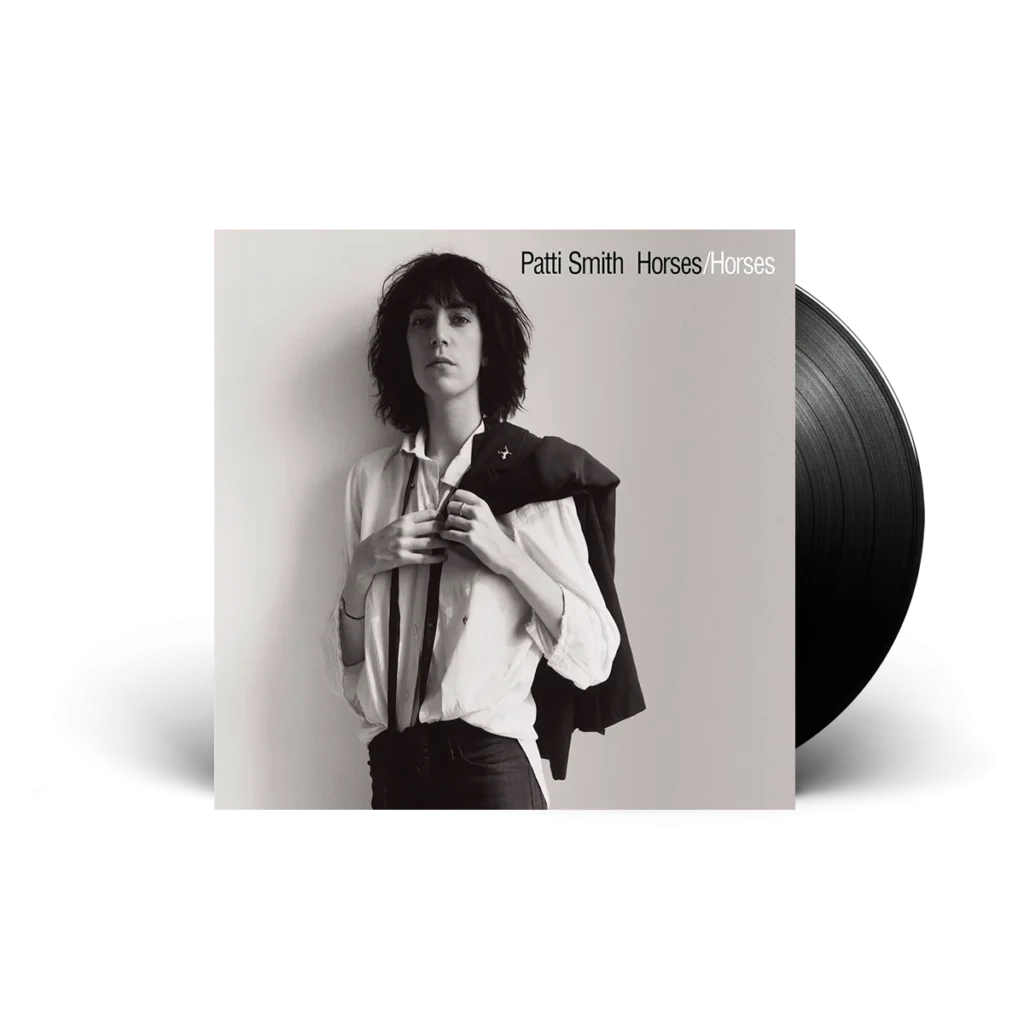
The Cover: Gender, Art and One Hell of a Blazer
Let’s talk about that album cover. Robert Mapplethorpe (who deserves his own Netflix series just for being Robert Mapplethorpe) took the photo of Patti in a crisp white shirt, skinny black tie and jacket slung over her shoulder like a French New Wave icon cosplaying Mick Jagger? It’s iconic. Subversive. Gender nonconforming before most people could even pronounce “nonbinary.”
You see it once and never forget it. Which is more than can be said for 90% of album covers from the same decade (we’re looking at you, airbrushed eagles and lava lamp fonts). It remains one of the most iconic album covers ever created. A declaration of intent: this is not your mum’s folk singer.
Track by Track: A Guided Tour Through the End of Innocence
1. “Gloria”
You know a record means business when it opens by casually committing blasphemy. “Gloria” is a cover of the Van Morrison tune, but by the time Patti’s done with it, it’s been exorcised, dragged through a beatnik alleyway and set free with a bleeding heart and a new purpose. This isn’t a song, it’s a manifesto with distortion.
2. “Redondo Beach”
Written after a row with her sister (as all cheerful songs are), this deceptively upbeat tune disguises its themes of depression and suicide behind reggae-inflected rhythms. The effect is jarring in the best possible way, like dancing to a breakup while reading Sylvia Plath.
3. “Birdland”
This 9-minute spoken word fever dream is where Patti truly unleashes her inner mystic. Inspired by Peter Reich’s memoir A Book of Dreams, it’s part UFO sighting, part Oedipal nightmare and part jazz funeral. You won’t hum it. You might not even like it. But you’ll remember it, probably while sweating in the middle of the night.
4. “Free Money”
A hymn to her mother’s dreams of lottery wins and a better life. Here, the American dream is laid bare for what it really is, a desperate wish whispered into a broken mirror. It’s catchy, bleak and oddly hopeful, like a motivational speech at an asylum.
5. “Kimberly”
Named after Patti’s younger sister, this track is a swirling, surreal meditation on familial bonds and maternal instinct. It feels like Patti is protecting something sacred while the world is collapsing around her – again, basically the 1970s in song form.
6. “Break It Up”
Co-written with Television’s Tom Verlaine, this is the most straightforward “rock” song on the album and even then, it’s more emotionally unstable than a glass of absinthe. Inspired by a dream Patti had about Jim Morrison breaking out of a statue (obviously), it’s romantic, unhinged and weirdly beautiful.
7. “Land”
Now we’re talking chaos. “Land” is three songs in one: “Horses,” “Land of a Thousand Dances,” and “La Mer (De).” It tells the story of Johnny, a doomed schoolboy who ends up in a sexually charged nightmare that feels like A Clockwork Orange if written by Allen Ginsberg. Patti screeches, chants and howls her way through this sonic séance. It’s exhausting. It’s exhilarating. It’s iconic.
8. “Elegie”
The album closes with a sombre tribute to Jimi Hendrix. It’s all minor chords and mournful reflection, a haunting ending that feels like being the last person at the party, staring at the ashtray. A stark contrast to the wildness before it. The revolution, it turns out, also has a hangover.
Context Matters: Punk Before Punk Had a Name
When Horses came out, punk as a genre hadn’t fully solidified. The Sex Pistols were still learning to tune (or not). CBGB was more concept than movement. Patti Smith stood at the crossroads of beat poetry, garage rock and performance art, flipping everyone the bird while quoting Rimbaud.
Elektra Records had no idea what to do with her. Critics were divided. But history vindicated her, because Horses inspired everyone from Michael Stipe to PJ Harvey to the bloke in your local coffee shop who wears eyeliner un-ironically.
Lines like “I was the woman who knew who she was / In the bed of a man” or “Horses, horses, coming in in all directions” aren’t just lyrics, they’re declarations. Manifestos scribbled on the bathroom wall of a poetry reading.
There’s no filler here. No sugar. Just Patti’s unfiltered vision of art as weapon, as sermon, as therapy session gone off the rails.
Cultural Impact: Welcome to the Revolution
Horses didn’t sell millions. It didn’t top the charts. But it did something more subversive: it influenced everyone worth a damn. From R.E.M. to Nirvana, from Madonna to PJ Harvey, Patti Smith carved a path for women in rock that didn’t involve glitter, cleavage, or pretending to care what men thought.
Critics hailed it, of course—because even in 1975, they knew this wasn’t just another debut. This was a gut punch to the soul of rock and roll, delivered by someone who read Rimbaud and spat when she talked.
Why It Still Matters (Even If You Think Punk Is Just Angry Karaoke)
In a world now saturated with bubblegum pop, lip-sync influencers and music that sounds like a vape commercial, Horses is a reminder that art can still bleed, sweat and howl. Patti Smith didn’t just sing songs. She channelled forces. She made music that scared people – for the right reasons.
And she did it all while being a woman in a scene dominated by men who thought they were edgy for writing songs about trousers.
My Final Thoughts: Still Galloping, Still Glorious
If you’ve never heard Horses, do yourself a favour. Lock the door. Light a candle. Stare at the cover. Then press play and brace yourself. It might not be “fun,” but it’ll remind you what music can do when it’s made by someone who genuinely doesn’t give a damn whether you like it.
Nearly 50 years later, Horses still feels like it was recorded last night in a haunted loft with bad wiring. It hasn’t aged. It’s transcended.
Listening to Horses in 2025 feels less like a nostalgia trip and more like a reminder that rebellion doesn’t have to be loud, but it damn well better be honest.
Patti Smith gave us poetry that bled, punk that read books, and the confidence to be ugly, brilliant, and unignorable. Horses didn’t just arrive. It charged in, kicked over the mic stand, and screamed something nobody had dared say before:
I am not here to entertain you. I’m here to be heard.

If You Like Horses, I Recommend These Albums:
- Television – Marquee Moon: If Horses was the sermon, this is the jittery New York scripture.
- The Velvet Underground & Nico – The Velvet Underground: For when you want your rock music with heroin, drag queens and a banana.
- PJ Harvey – Rid of Me: Because the legacy of Patti’s primal yowl lives on in the 90s.

Horses
| # | Track | Duration |
|---|---|---|
| 1 |
Gloria: In Excelsis Deo
Patti Smith
|
05:54 |
| 2 |
Redondo Beach
Patti Smith
|
03:27 |
| 3 |
Birdland
Patti Smith
|
09:15 |
| 4 |
Free Money
Patti Smith
|
03:52 |
| 5 |
Kimberly
Patti Smith
|
04:26 |
| 6 |
Break It Up
Patti Smith
|
04:02 |
| 7 |
Land: Horses / Land of a Thousand Dances / La Mer(de)
Patti Smith
|
09:28 |
| 8 |
Elegie
Patti Smith
|
02:42 |



